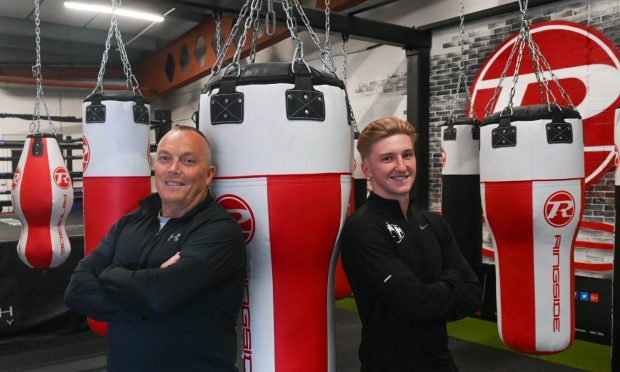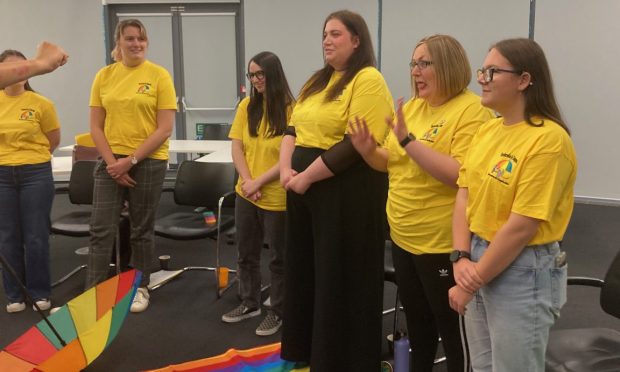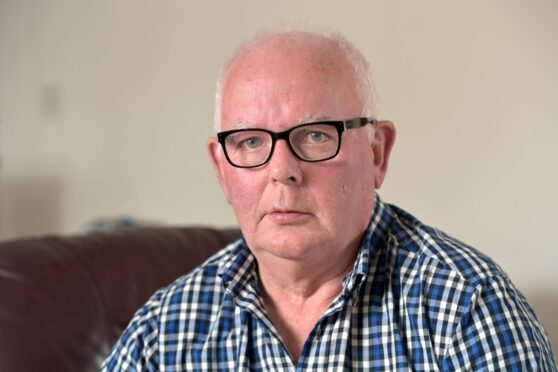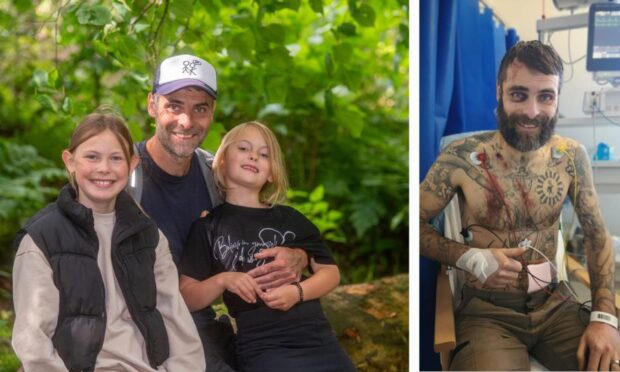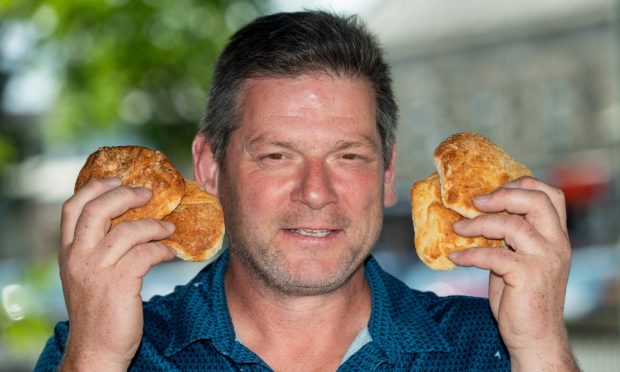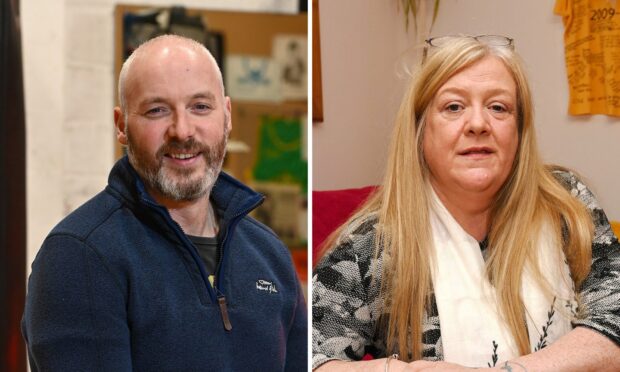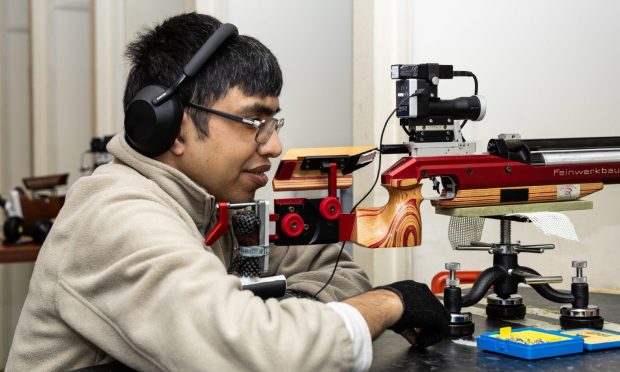Traditionally the breadwinners of the home, working long hours at tough jobs before having a pint at the pub and watching the football, generations of men have let their health take a back seat in favour of appearing macho.
Yet according to Dick Winchester this attitude of keeping your head down and simply getting on with it urgently needs to change.
He believes that millions of men across the country take the view that it is somehow embarrassing, or perhaps unmanly, to look after your own health.
To try to change this, Dick is sharing his own battle with prostate cancer in a bid to break the taboo.
“I have prostate cancer and apart from my immediate family you’re the first to know,” said Dick, who lives near Insch.
“My story is in some aspects quite common. However, there was a huge bucket of luck involved. You may not think finding out you have prostate cancer is in any sense lucky, but believe me it is, because if you’ve got it then you really need to know you’ve got it and as early as you can.”
Dick is semi-retired and a regular columnist for the Press and Journal’s oil and gas website, Energy Voice. He is also a member of the Scottish Government’s Energy Advisory Board.
In Scotland, prostate cancer now accounts for more than 20% of all cancers diagnosed in men, with new figures revealing that 11,819 men in the UK died from the disease in 2015.
It is more common in men over the age of 40, and for the first time ever death rates have overtaken those of breast cancer in women.
However, unlike The Scottish Breast Screening Programme which invites women aged over 50 for routine screening checks every three years, currently there is no regular screening programme to detect the symptoms of prostate cancer early.
Identifying symptoms is entirely down to the men themselves, as Dick discovered.
“Just before Christmas 2016 I started experiencing some difficulty in urinating,” he said.
“In broad terms it meant I had to pee three or four times rather than just once.
“Once I’d realised, and more importantly actually accepted something was going on, it prompted a visit to the doctors in early 2017.
“The diagnosis was pretty straight forward.
“An ultrasound device used to measure bladder capacity confirmed I was retaining a large amount of urine, but the old finger up the rear end test suggested the prostate was probably normal.
“A prostate-specific antigen (PSA) test also suggested there wasn’t a cancer issue.
“Needless to say it is entirely natural to grab those results and run with them. After all, a low PSA means no cancer doesn’t it?
“No it doesn’t, or rather, no it doesn’t all of the time.
“I was told on numerous occasions by doctors that the PSA test is nothing like as black and white as one might think, and this proved to be a fortuitous piece of advice.
“So it was decided that my prostate had swollen and was squeezing my urethra, restricting my ability to pee.
“The crunch though came a few weeks later when the result of the automatic biopsy tests came in.
“This showed that in fact I did have prostate cancer, although the level of active cancer cells was pretty small.
“I then underwent a bone scan and MRI scan.
“The former designed to determine that the cancer hadn’t spread into my bones and the latter to get a clearer picture of the extent of the cancer itself.
“My results offered good news, showing that the cancer was contained within the prostate capsule and was quite small.
“Next step, which I’m going through now, is hormone treatment prior to a month’s worth of radiology.
“The hormone treatment is designed to lower your testosterone levels which I had never appreciated actually drives cancer cell activity.
“As a result my PSA level has now dropped to ‘immeasurable’ which is exactly what was planned.”
Dick admits that being told you have cancer is frightening, and realises he is lucky that prostate cancer responds well to treatment.
In general, while the number of people diagnosed with prostate cancer in Scotland has increased, so have survival rates, especially when symptoms have been recognised early.
“I have two friends whose prostate cancers were also caught very early and both have been cured,” Dick said.
“They both did what I did and raised their own alarm when things in the pee department weren’t going well.
“But I also had a friend who pretty much ignored those and other symptoms for years.
“Sadly, as a consequence, he’s no longer with us.
“I agree a routine PSA test could be valuable, but I believe strongly that recognising and accepting your own symptoms, such as a change in your ‘peeing’ routine, are equally if not even more important.”
Dick believes change will only be achieved through education and encouragement, and is urging male-dominated industries like the oil and gas sector to develop nationwide programmes to make this happen and break the taboo of talking about men’s health.
“There is a lot of confusion surrounding the PSA test,” said Dick.
“Research claims that many patients with high PSA results who have undergone a prostate biopsy don’t have cancer, yet 15% of men with relatively low PSA results who have a biopsy actually do have prostate cancer.
“So men with a ‘normal’ PSA test result may have cancer, and most with an ‘abnormal’ result don’t.
“That’s why we need a new test, but it also makes being alert to and acting on the signs of your own symptoms even more important.
“The [energy] industry should be encouraging this and maybe even funding some of the work on a new test.”

